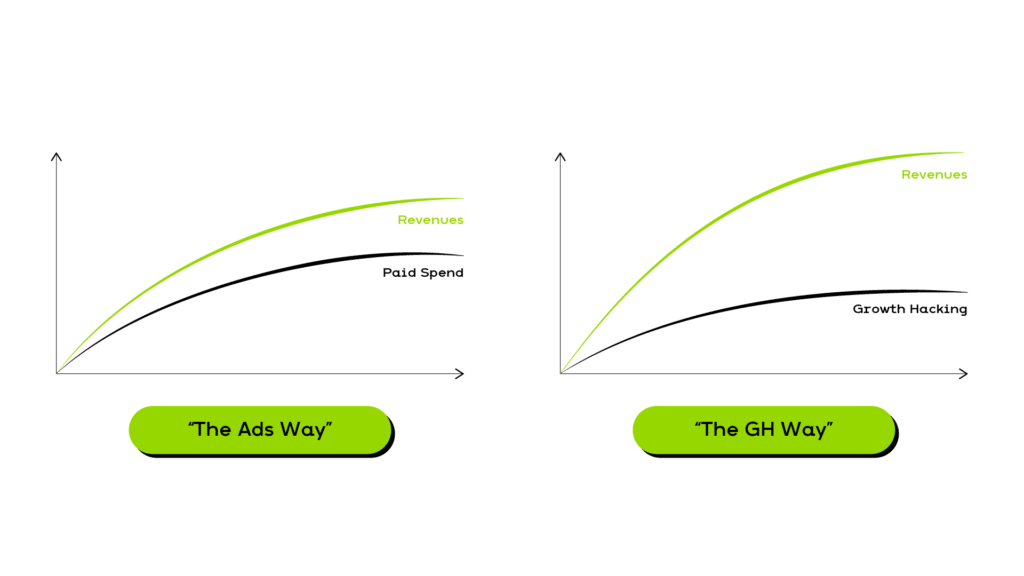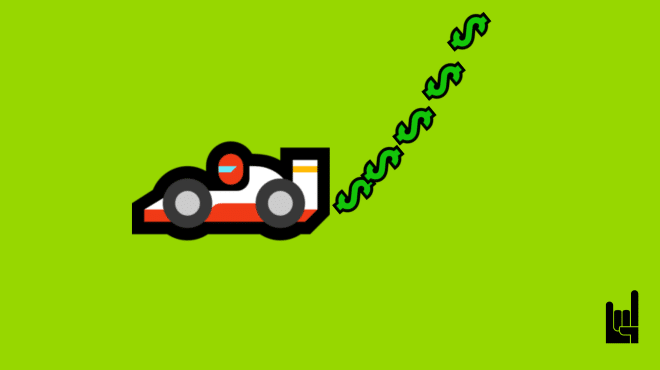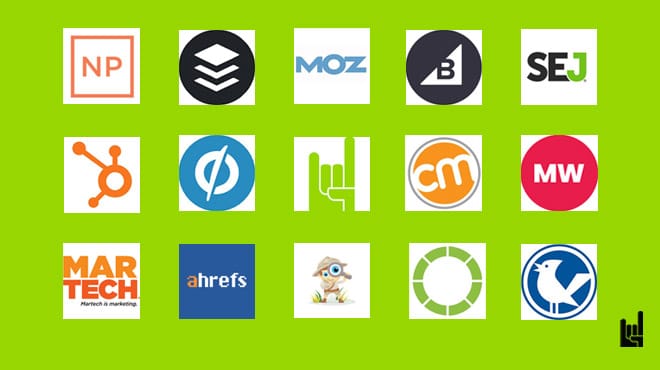Growth Hacking (also called Growth Marketing) services differ significantly from traditional digital marketing services in their scope, focus, strategic role, and approach to achieving business growth.
Disclaimer: All insights and information shared in this article come directly from the courses and teachings of Theo Moulos, CEO of GrowthRocks and Chief Strategist at Growthhackers.com. This content does not include general knowledge or responses generated by ChatGPT.
Growth Hacking isn’t just traditional digital marketing dressed up in new terminology—it’s a completely different game. Imagine traditional digital marketing as assembling puzzle pieces independently. In contrast, growth marketing sees the entire picture from the start, strategically placing each piece to complete a cohesive vision. This article clearly explains how growth marketing differs, making it understandable even if you’re entirely new to the concept.
What Exactly is Growth Marketing?
Growth marketing is a comprehensive approach focused specifically on growing the entire business. Rather than targeting individual channels or isolated tasks, growth marketing evaluates the complete customer journey. It utilizes data-driven tactics, experimentation, and close collaboration across departments (like product and sales) to achieve sustainable outcomes.
Key objectives include customer acquisition, retention, and revenue growth.
Holistic vs. Siloed Approach
Traditional digital marketing services typically operate in silos. Separate teams or agencies handle specific tasks like social media, SEO, content creation, or paid advertising, often independently. Growth marketing, however, emphasizes integration and collaboration across these channels. Instead of isolated efforts, growth marketers ensure each action supports the overall growth strategy. They frequently act as strategic advisors directly to company leadership.

Focus on Growth vs. Channel Optimization
Traditional digital marketing tends to prioritize specific channel performance. For instance, an SEO specialist might only focus on search rankings, while a social media manager concentrates on engagement. Growth marketing prioritizes overarching business goals, such as customer acquisition, retention, and lifetime value (LTV). It coordinates all channels, ensuring every initiative directly supports these broader objectives.
When it comes to marketing, you essentially have two paths: you can rely on ads, continually paying to capture attention with short-term campaigns that vanish as soon as you stop spending—or you can build a robust growth system that continues working for you, even while you’re asleep.
Ads offer instant visibility, but they’re a temporary fix: the moment you pause your budget, your leads vanish. In contrast, a well-designed growth engine leverages organic channels, referral loops, viral features, automated processes, and product-driven growth to generate sustainable momentum. Instead of renting visibility, growth marketing lets you own an ecosystem—one that consistently delivers results, even when you’re not actively managing it.
Grow while you sleep
Traditional digital marketing campaigns, especially paid advertising, often deliver immediate yet short-lived results. When advertising stops, results frequently decline sharply. Growth marketing aims for sustainable growth. It develops strategies and systems—like organic growth, referrals, or viral mechanisms—that continue delivering value long after initial investments.
You essentially have two paths: you can rely on ads, continually paying to capture attention with short-term campaigns that vanish as soon as you stop spending—or you can build a robust growth system that continues working for you, even while you’re asleep.
Ads offer instant visibility, but they’re a temporary fix: the moment you pause your budget, your leads vanish. In contrast, a well-designed growth engine leverages organic channels, referral loops, viral features, automated processes, and product-driven growth to generate sustainable momentum. Instead of renting visibility, growth marketing lets you own an ecosystem—one that consistently delivers results, even when you’re not actively managing it.

Strategic Role and Business Acumen
Growth marketing involves strategic advisory roles, not just tactical execution. Growth marketers must understand how marketing fits within the broader business context. This includes insights into products, operations, and customer relationships. Traditional digital marketing agencies usually focus narrowly on executing their specialized tasks without significant involvement in overall business strategy. Because everything is around a problem. i.e. entering a new market, launching a new product.
Growth marketing typically begins by identifying specific business problems—like low user activation or slow market entry. Marketers then develop a comprehensive strategy to address these challenges directly. Traditional digital marketing often provides predefined services, such as social media management or SEO improvements. These services might not always address underlying business challenges holistically.
Evolution of Growth Hacking and Specialized Services
Growth marketing has rapidly evolved to include advanced, specialized services. These include attribution modeling to identify effective marketing channels, sophisticated dashboards for performance tracking, detailed customer segmentation, personalized marketing automation, content monetization, and advanced growth techniques like Product-Led Growth (PLG).
The evolution and expansion of specialized services in growth hacking happened naturally because of the uniquely diversified skill set growth hackers possess.
Growth hackers aren’t confined to a single expertise—they effortlessly bridge marketing, technology, data analytics, and business strategy. Because of this hybrid profile, growth hackers quickly became central figures in data governance projects, adapting marketing tactics to comply with initiatives like GDPR and CCPA.
When digital transformation surged during COVID-19, it was growth hackers who swiftly adapted strategies and facilitated the rapid pivot of businesses to digital-first models. Now, in the era of AI, growth hackers are again leading the charge, integrating artificial intelligence and automation into growth strategies.
This remarkable versatility has turned the growth hacker into a modern-day jack of all trades—someone who continuously adapts and evolves, always at the intersection of emerging technologies, regulations, and market shifts.

Technical Depth and Data Analytics
Traditional digital marketing uses data to measure results. Growth marketing, however, heavily relies on advanced technical skills and sophisticated data analytics. Growth marketers regularly implement detailed tracking, attribution models, automation, and iterative experimentation. These techniques continually optimize strategies and provide deeper insights to help businesses scale effectively.

Technical depth in growth marketing isn’t optional—it’s essential. Without a thorough understanding of the technical details behind platforms and tools, your strategies will lack precision, causing you to overlook critical opportunities or, worse, make misguided recommendations. A growth hacker must be deeply familiar with the technical intricacies of platforms, including tracking pixels, analytics integration, data attribution models, and automation capabilities. This knowledge ensures tactics are practical, achievable, and tailored precisely to your client’s ecosystem.
If you miss these technical nuances, you risk advising clients based on superficial knowledge, potentially guiding them toward inefficient or even harmful marketing decisions.-Theo Moulos
Emphasis on Experimentation and Process
Growth marketing is centered around ongoing experimentation. Marketers continually test hypotheses, analyze results, and apply successful strategies systematically. Traditional digital marketing might involve some testing, but it typically doesn’t emphasize rigorous, continuous experimentation as deeply as growth marketing does.
Borrowing Agile from Developers
To implement the above, we, Growth Hackers, have borrowed significantly from software developers, specifically adopting their agile development methodologies, known as Scrum. Created to make software development flexible, responsive, and efficient, Scrum breaks down projects into small, manageable units known as sprints. Each sprint typically lasts one to two weeks and involves regular team meetings, daily stand-ups, and continuous feedback loops. Growth marketers adapted this approach, applying agile principles to marketing tasks. By doing so, they foster greater collaboration, quicker iteration, rapid experimentation, and more efficient use of resources, ensuring marketing strategies remain flexible, adaptive, and closely aligned with business

Relationship with the Product
With Product-Led Growth (aka PLG) rising in popularity, growth marketers now closely collaborate with product teams. They enhance the product itself as a primary growth driver. This contrasts with traditional digital marketing, which usually has a more distant relationship with product development. Traditional marketers primarily focus on external promotional efforts.
In growth hacking, we approach marketing from the inside out, recognizing that true growth begins with the product itself. Rather than relying solely on external promotion, we intentionally design products to become engines of their own growth. This involves embedding viral elements—like referral loops, seamless sharing mechanisms, or incentives for inviting others—directly into the user experience. Moreover, growth hackers leverage built-in feedback loops to continuously gather data from users, optimizing features and enhancing satisfaction. By empowering the product to drive its own adoption, retention, and expansion, growth hacking shifts marketing from an external push to an internal, organic momentum fueled by delighted users.
My Final Thoughts
Embracing Growth Hacking isn’t just adopting new tactics—it’s fundamentally reshaping how businesses approach marketing. Companies transitioning from traditional digital marketing to growth marketing gain more sustainable, integrated, and impactful strategies. Whether you’re new to marketing or experienced, understanding these differences and adopting growth marketing principles can lead to lasting success and a competitive advantage in today’s rapidly changing marketplace.
Ultimately, the value of growth marketing services lies not merely in broader digital expertise, but in the unique blend of skills, methodologies, and systematic thinking growth hackers bring.
A growth hacker doesn’t just possess knowledge—they master processes that consistently drive results. They may not always promise immediate success from day zero, but what they do provide is even more powerful: a proven system and approach designed to help your business reach—and surpass—its growth goals.
Was this article useful?

Theodore has 20 years of experience running successful and profitable software products. In his free time, he coaches and consults startups. His career includes managerial posts for companies in the UK and abroad, and he has significant skills in intrapreneurship and entrepreneurship.



